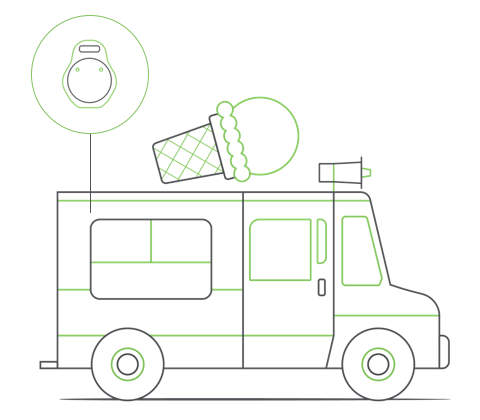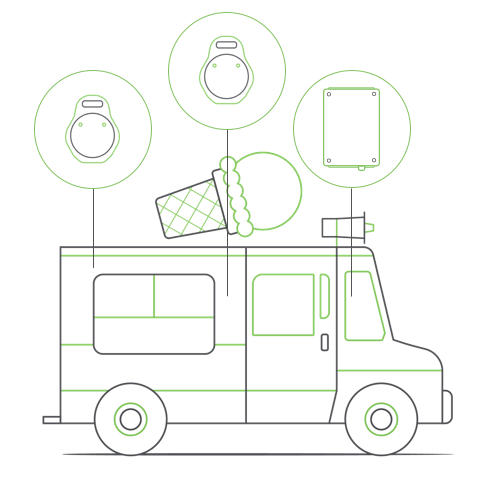Written by SmartSense | Food Safety, Supply Chain
Explore solutions built for your industry
Our customer-proven solutions monitor medications and food inventories for some of the most recognizable names in the industries of healthcare, food service, and transportation, and logistics. See how our solutions adapt to your industry needs.
SEE SOLUTIONSKroger Health Strengthens Compliance Visibility with SmartSense
Watch The VideoLEARN
Questions? Call +1 (866) 806-2653 to speak to our experts.
Schedule demoQuestions? Contact us.
Call +1 (866) 806-2653 to speak with our experts or get started with a demo.
CONTACT USAbout Us
SmartSense was created to use the power of the Internet of Things (IoT) to help our customers protect the assets most critical to the success of their business.
See our storyCONNECT. PROTECT. RESULTS.
Questions? Call +1 (866) 806-2653 to speak to our experts.
Schedule demoPlease select your login
August 20, 2019
New Age Monitoring: How Improvements in the Visibility of Data is Empowering Supply Chains
In the IoT revolution for supply chains, visibility has become the eighth wonder of the world. Visibility enables shippers, carriers, and anyone delivering goods to know where they are and how they are performing at any given time. In the past, such visibility has been delayed – and in some cases it still is. But we are entering the age where supply chain monitoring is done in real-time, continuously, for single shipments or groups of shipments. Visibility and monitoring are not only gaining complexity, they are also becoming more effective than ever before; as a result, shippers expect significant gains from it.
Different Monitoring Applications
Nowadays, shippers are most concerned with the quality of their cargo at arrival and the assurance that the cargo remains in its intended condition. To ensure this, data-centered thrust in the age of IoT strives to drive supply chains everyday by providing robust monitoring. When cargo is monitored through wireless sensors and other devices, information such as temperature and humidity of an environment, as well as other conditions like liquid levels, product, weight, or any other important parameters, are maintained to ensure safe arrival.
Cameras also provide another means of visibility by observing goods in transit. These devices visually monitor conditions and offer observers information to make quick decisions if necessary. This includes keeping an eye on storage configurations, pallet loads and their integrity, and any damage from combustion or other destruction that may occur. This method allows for early intervention to prevent further damage from taking place.
Methods of Monitoring
There are several ways that monitoring may take place. Each way offers different advantages to many in the extended supply chain, including shippers, carriers, and logistics agents who are responsible for the cargo.
Single point monitoring
The first type of monitoring to be introduced to the supply chain was single point monitoring, where the cargo is observed at one point in time. Such monitoring may or may not recur on a regular basis. It may be quite effective when limited time is available to check on cargo integrity. In other words, the shipped goods can be checked whenever desired.
However, the data may not be in real time and may be replicated from a signal downloaded from a server or, in some cases, a satellite. The information afforded by single point monitoring may be observed at a later date, but it may also be a time lapse image of the cargo with a delay between when the cargo is observed and when the actual photograph was taken via the camera shot.

Single point temperature monitoring typically occurs at time of shipment and delivery.
Continuous monitoring
The second type of monitoring is continuous monitoring. Such monitoring may be delayed or in real-time. An information feed about the transported goods is “always on” and available to the observer. It allows the observer to monitor goods shipped wherever, whenever, and however the responsible parties wish. Such information may be fed into a dashboard, which may include a series of screenshots. The observer may query or recall the screenshots as desired, individually or all together in one single view. It's quite effective in ensuring confidence that the cargo is intact and is being satisfactorily transported.

Continuous temperature monitoring provides proof of temperature control from shipment to delivery to validate inventory temperature throughout the entire transport chain.
Real-time continuous monitoring
The third type of monitoring is real-time, continuous monitoring. With this type, data is fed as it happens. The observer knows what's going on at present, no matter when or where the cargo travels around the world. This is ideal for quick action to control the cargo shipments should anything occur that may require immediate intervention, such as making adjustments to the environment (temperature or humidity) or another procedure.
For example, if a fire breaks out, or if the cargo is leaking or becomes disheveled due to a vibration, somebody can intervene and act immediately, thanks to real-time monitoring. This may also take place on an “as needed” basis as continuous monitoring may not be necessary but may be viewed as conditions dictate – for instance, if the transportation asset goes through a storm, or if an accident occurs, or any other circumstances which may signal that the cargo could be in jeopardy. Continuous monitoring allows more control as needed, in real-time.

Real-time continuous monitoring offers additional monitoring capabilities through multiple sensors, and provides immediate visibility into temperature data.
What's the value of these different methods of monitoring?
These methods provide options for the observers to monitor the shipment of their goods and enable a better pathway to full visibility and control. Now, a large volume of cargo can be viewed and monitored with the use of more efficient monitoring options and technology through sensors made possible by IoT, dashboards, and advanced analytics. These methods also allow observers to see and monitor goods from one place and across different modes of transportation. With more advanced technology and new methods available to monitor transportation, observers have maximum visibility and control of shipments under their responsibility.
In the future, shippers will seek carriers and transportation agents who understand the value of monitoring and have the hardware and software to support the transportation of goods – intact, in top condition, and to the satisfaction of the end-users and customers at the end of the supply chain.
Subscribe to Connected Insights!
Subscribe to our blog to get regular email updates on food safety, pharmacy safety, and supply chain insights.
Topics:
Food Safety
Supply Chain
Other Suggested Posts
Why Customer Success Makes the Difference in Your Condition Monitoring Program
If your business objective is to implement an efficient and successful condition monitoring program, gone are the days of “set it and forget it.” Today’s savvy ...
Why K-12 School Cafeterias Are Automating Food Safety
During the COVID-19 pandemic, there were significant disruptions to K-12 school food services nationwide. School nutrition directors were forced to rapidly ...
Frozenomics: Why Freezers Are Becoming America's Financial Lifeline
When times get tough, Americans get creative with how they stretch budgets. That's why today's shoppers are fighting inflation and financial strain with an ...
How Machine Learning Elevates Traditional Temperature Monitoring
While a minority of food companies and healthcare organizations continue to manually collect temperature logs to meet compliance regulations, most enterprises ...
Creating a Customer-Centric Food Chain with Sensing-as-a-Service
The food service industry is undergoing an era of labor uncertainty and demand volatility. The reasons are many and complex: the rise of e-commerce, supply ...
Subscribe to the SmartSense Blog
Stay up-to-date on the evolution of IoT connectivity.
CONNECT. PROTECT. RESULTS.
Learn how our complete critical
environment monitoring solution will help you
connect and transform your business.
Call +1 (866) 806-2653 to speak with our industry
experts or get started by
requesting a demo.
